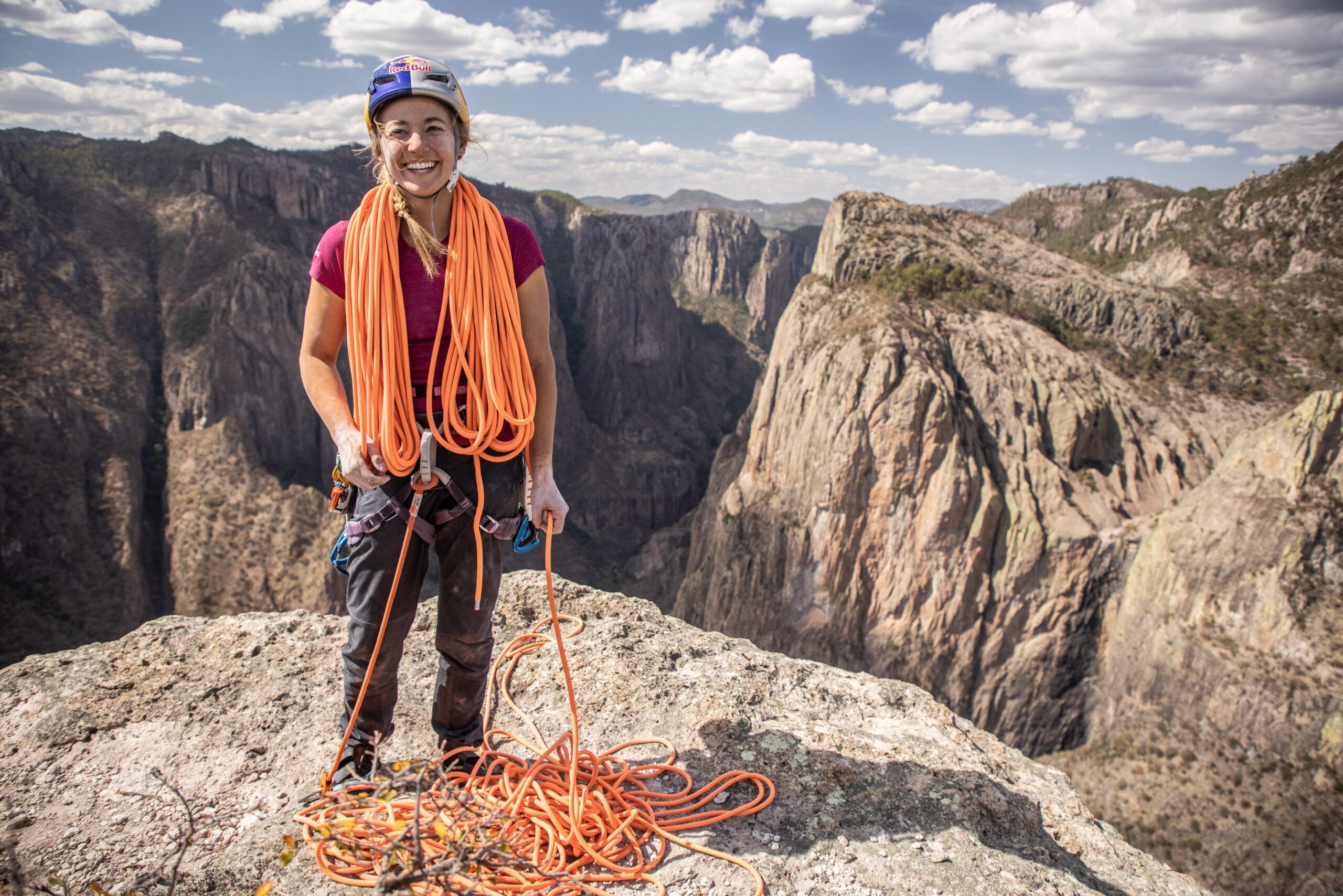Midway through Sasha DiGiulian’s new eighty-minute HBO sports documentary, Here to Climb, she expresses one of the film’s major tensions: “You have to be selfish,” she says. Early in her climbing, DiGiulian’s mom acted as her belayer so she could spend time on the wall and not waste time belaying other people. Thanks to support like this—and personal dedication—DiGiulian became one of America’s most accomplished sport climbers, sending some of the hardest sport routes around the world, and she recently ticked off her 50th 5.14 route. But when she shifted from short sport climbs to making first female ascents of longer, multi-pitch routes, she found that focusing on herself wasn’t enough. “Big wall climbing is about teamwork and about partnership,” professional climber Cedar Wright says in the film. DiGiulian, admittedly, needed to learn how to climb with others.
The main narrative of Here to Climb, which debuts June 18 on HBO, uses DiGiulian and Lynn Hill’s 2023 ascent of the three-pitch route called “Queen Line” on the Flatiron’s Maiden to demonstrate DiGiulian’s development as a climber and teammate.
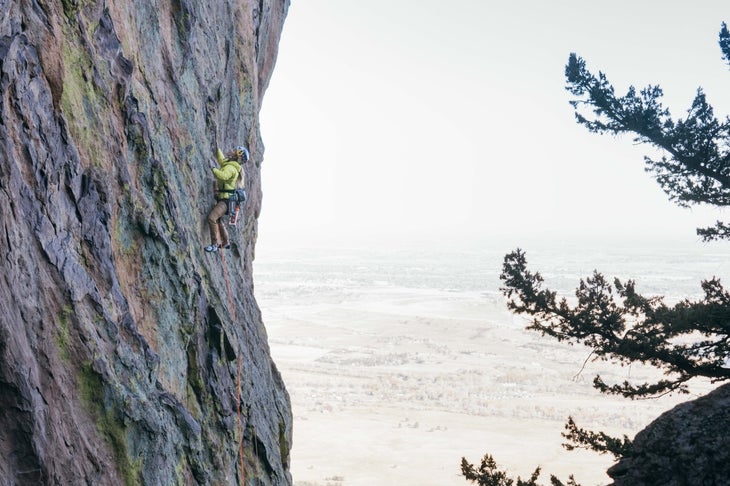
DiGiulian grew up with a poster hanging on her wall of Hill making the first free ascent of the Nose of El Capitan with the caption, “It Goes Boys!” And, in the film, Hill assumes the role of mentor and DiGiulian’s foil. Though they both stand at the forefront of climbing in their respective eras, the two women developed vastly different understandings of what it means to be an elite climber. Hill came from a time before social media, where even groundbreaking ascents, like Hill’s first free ascent of the Nose, were understated. Digiulian, meanwhile, a late-generation millennial, discusses her focus on monetization and hyping her ascents. “I took a very business-forward approach to my career,” DiGiulian says, which allowed her to move from a skilled climber to a professional who capitalized on her social media reach.
“She’s the OG millennial influencer pro climber,” Wright says.
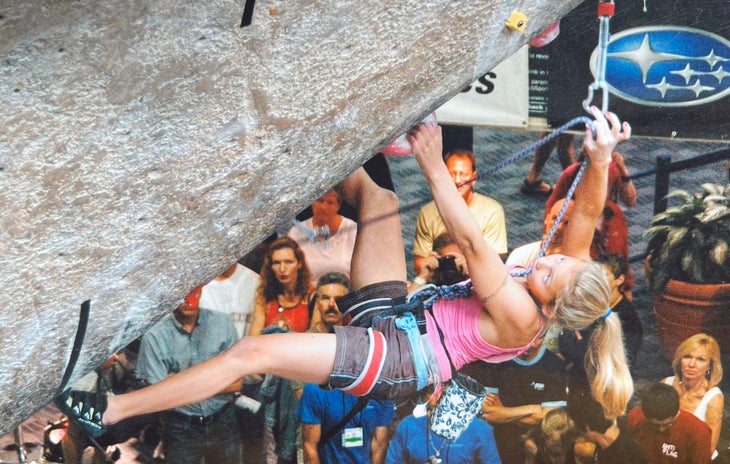
But social media work comes at a price. The film discusses her struggles with her body while operating both as a performance athlete and as an influencer. DiGiulian describes her experience of being an 18-year-old 94-pound comp climber with body dysmorphia and then, gradually, finding comfort in her own skin. She talks about the criticism she received from an Agent Provocateur campaign, where she climbed in lingerie to show a correlation between strength and femininity. The film also examines the fat shaming she experienced online, though the film avoids naming Joe Kinder and the specifics of the event.
Though DiGiulian does note that this “was an incredibly traumatizing period,” the fact that the cyberbullying occupies a mere three minutes of the film might leave some viewers might be left to wonder just how much these things have affected her. Lynn Hill, however, notes that, DiGiulian is “really good at compartmentalizing her emotions,” saying that she was shocked to observe a calm, young DiGiulian giving a slide show not long after the death of her father in 2014.
The film delves a little into the negative impacts of DiGiulian’s relentless drive, however. During one of her attempts on Pico Cao Grande, a volcanic plug on Sao Tome, an island south of Nigeria, DiGiulian rips off a large section of rock, which nearly hits her photographer. After that, the team questions her motives and her acceptance of risk for others. After nonstop rain, DiGiulian and her partner, Angela VanWiemeersch, reassess their objective and bail, one of the few retreats in DiGiulian’s long career.
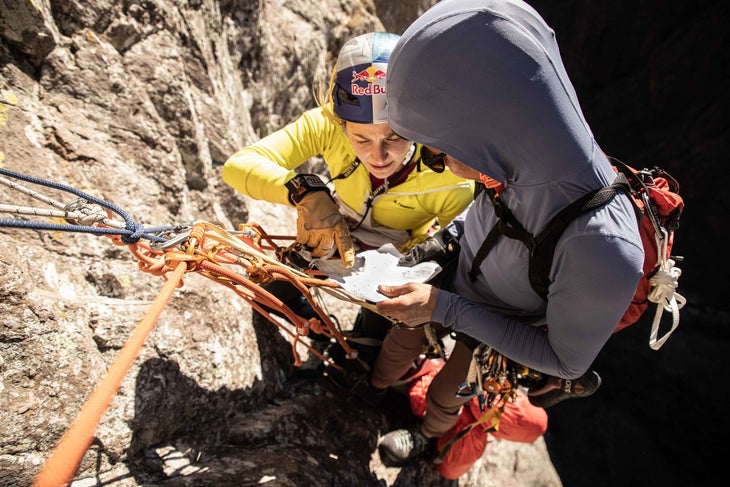
As with her struggles with social media and body image, her climbing failures and difficulties are only briefly portrayed, but candor leaks into the film.
“I feel like with every big thing she’s done, there’s always a weird asterisk,” Alex Honnold notes early in the film, referring to the significant scrutiny that DiGiulian’s ascents have seen from the climbing community.
After her 2021 ascent of Logical Progression, a long multi-pitch bolted route in Chihuahua, Mexico, DiGiulian that her partner didn’t successfully free one of the crux pitches and that DiGiulian top roped it, which adds a small asterisk to the ascent. Drama has also surrounded DiGiulian’s first female ascents, as with a public tiff in 2014 (detailed in an ) she had with Nina Caprez over which one of them should have the right to rig and film the first female ascent of Orbayu, a 5.14 big wall on Spain’s Naranjo de Bulnes. While the film alludes to another controversy on the Eiger, it glosses over the details.
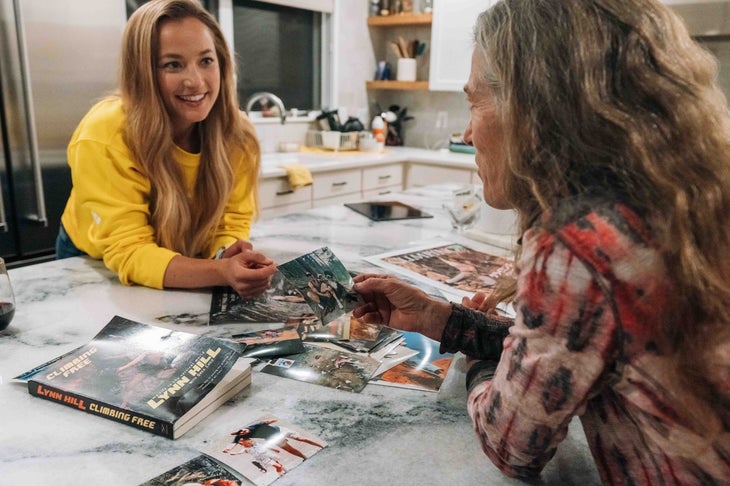
In addition to the Lynn Hill partnership, the film also focuses on DiGiulian’s experience with chronic hip dysplasia, for which she underwent five surgeries in 2020. She had planned for Logical Progression to be a last hurrah before the surgeries, but before she could arrive, Nolan Smythe, one of the film crew riggers, died while fixing ropes for DiGiulian’s team. The death caused DiGiulian to retreat from the climb and instead push forward with her hip surgery. She struggled through her recovery, fixating on getting back on rock and . “She needs something that’s just on the ragged edge of insanity,” her partner Erik Osterholm said of DiGiulian’s drive to get back to her pre-surgery objective. Her dedication saw her back to Mexico and up the route.
Here to Climb’s arc moves quickly through DiGiulian’s problems, offering a superficial glimpse into what drives her. That’s easy criticism, though. It both minimizes the film’s breathtaking climbing footage and doesn’t do justice to the fact that DiGiulian speaks with vulnerability about her career. All in all, it’s an enlightening look at professional climbing.
Ricki Stern and Annie Sundberg directed the HBO sports documentary Here to Climb from Red Bull Media House. The film debuts Tuesday, June 18 at 9pm ET/PT on HBO.


